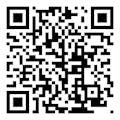There are common causes of both back pain and neck pain and at Babin Physical Therapy we can help with both. Changes in the spine’s anatomy often cause back pain. There may be lumbar disc herniation, lumbar degenerative disc disease, osteoarthritis or sacroiliac joint dysfunction. Disc herniation occurs when the gel-like interior of the disc leaks outward and irritates the nerve roots. It typically causes a stabbing pain in the back of the legs and back pain. Wear and tear on the spinal discs can lead to lumbar degenerative disc disease. It causes low-level back pain. Osteoarthritis is a wear and tear of the facet joints in the spine. Friction can cause a pinched nerve from osteoarthritis. And when the sacroiliac joint has too much or too little motion, it can cause lower back pain.
Muscle strain is a common cause of neck pain. It can be due to sleeping in awkward positions, whiplash or poor posture. Other common causes of neck pain include cervical osteoarthritis, cervical degenerative disc disease and cervical herniated disc. Back pain and neck pain can range from moderate to severe. If you’re experiencing back pain or neck pain, call our office today to see how physical therapy can help you live a pain-free life. Get back and neck pain relief with help from our skilled physical therapists.
How Physical Therapy Can Deliver Pain Relief for Back Pain and Neck Pain
Physical therapy is a common treatment for pain relief in the cervical area and lumbar area. The goals and benefits of physical therapy for neck pain and back pain include:
- Improving neck and back range of motion- By engaging in flexibility exercises in the neck and back area, you’ll be able to move easier.
- Reducing pain and stiffness in the back and neck area- Passive treatments by a physical therapist will accelerate healing and lessen pain.
- Developing strengthening of the neck and back- With specific physical exercises, you’ll be building up the muscles in the neck and back areas.
- Developing strategies to prevent neck pain and back pain from recurring- Learn proper body mechanics to avoid future injury.
- Improving the quality of life- With physical therapy, you’ll be able to return to your regular routine must faster.
The two forms of physical therapy are passive treatments and active treatments. Passive treatments for neck pain include electrotherapy, ice packs, ultrasound, massage therapy and heat therapy. These treatments help reduce pain, inflammation and stiffness. Active physical therapy treatments include exercises and stretches. By engaging in active exercises with a physical therapist, strength and flexibility are improved in the neck, and the muscles become less painful. In addition, stress on the cervical spine is reduced.
Like physical therapy treatments for neck pain, back pain physical therapy treatments include both passive and active methods for the patient. “Current medical literature suggests moderate to strong evidence supporting the benefits of physical therapy’s role in reducing neck pain and back pain and improving range of motion.”
How Back Pain and Neck Pain Are Diagnosed
If you’re experiencing neck or back pain, a doctor will perform a physical exam and may even order X-rays or magnetic resonance imaging (MRI). An MRI provides pictures of blood vessels, ligaments, tendons and soft tissues. It can provide the root cause of your back pain or neck pain. It’s quite common for a doctor to recommend physical therapy to treat neck and back pain
Back and neck pain can lead to a loss of productivity. It’s a common cause for disability. It can also lead to nerve damage, depression and even weight gain. If you’re suffering from back pain or neck pain, it’s time to take action. Get neck pain relief with the help of a physical therapist. A physical therapist will develop a personalized treatment plan just for you.
Why suffer when physical therapy can give you pain relief? Contact our Kenner, LA office today to see how physical therapy can help you live a pain-free life.

